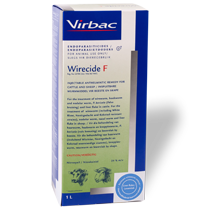
Liver Fluke - The Economic Impact
The economic impact of liver fluke can be very substantial. Liver fluke infection causes a reduction in growth rates (ADG), reduced milk production, reduced fertility, liver condemnation at the abattoir, mortalities (deaths) and secondary infections.
IMPACT ON MILK PRODUCTION
In high risk fluke areas liver fluke is a significant threat to optimal milk production. The effect of liver fluke on milk is well documented.2
- Milk loss due to liver fluke infection can amount up to 1kg/day. Over a lactation period of 300 days, it translates to a loss in milk production of up to 300 litres per cow3. With a producer milk price of R5,15/lt, it translates to a possible loss of R1545 per cow per lactation!
- A high incidence of liver fluke infestation does not only reduce milk production, but also negatively affects the quality of the milk produced due to a reduction in the milk butterfat concentration1.
IMPACT ON GROWTH IN CALVES
Liver fluke can affect weight gains (ADG) in all cattle, but especially in young and growing cattle. A heavy infestation of 200 fluke per calf, can cost up to 28,5% in reduced weight gain 4,5 The graph below shows the reduction in body weight expressed as weight loss on calves - depending on the severity of liver fluke infestation2
A reduced growth rate could affect the general development of the calf and can lead to reduced weaning weights or a delay reaching puberty (breeding age). Both these conditions have a major economic impact. With the current weaner price of >R30/kg, a small reduction in weaning weight will mean a big loss in income.
IMPACT ON BODY WEIGHT OF SHEEP
Liver fluke infestations have a 15% impact on food intake that results in poor growth if not controlled.
In this trial : Liver fluke free sheep were dosed with F.hepatica metacercaria for 5 days each week for a period of 22 weeks, there was a tendency of poorer weight gain in the infected groups from week 20.
- Animals with the light infestation were dosed with 8 x F.hepatica metacercaria for 5 days a week for 22 weeks
- Animals with the heavy infestation were dosed with 14 x F.hepatica metacercaria for 5 days a week for 22 weeks
LIVER CONDEMNATION
The loss of income due to liver condemnations caused by liver fluke infestation, can exceed R100 per animal slaughtered!
Implement a STRATEGIC CONTROL STRATEGY year-round, using the most efficient products to REDUCE THE ECONOMIC IMPACT caused by liver fluke.
References
- Department of Agriculture and Rural development, Technical Note, Dairy 13 April 2003
- Ross JG (1970) British Veterinary Journal, 126; xiii-xx
- The University of Reading, department of Agricultural and food Economics, The Economics of Fascioliasis (Liver Fluke)
- Dargie DJ (1986) in Ed. MJ Howell, Parasitology, Quo Vadit 1986.
- Hutton Oddy, Meat and Livestock Australia, 2003 Armidale Feeder Steer School.
- Sykes, AR, Coop RL, Rushton B. (1980) Chronic subclinical fascioliasis in sheep: effects on food intake, food utilisation and blood constituents, research in Veterinary Science. 28:63-70
60092306CM





